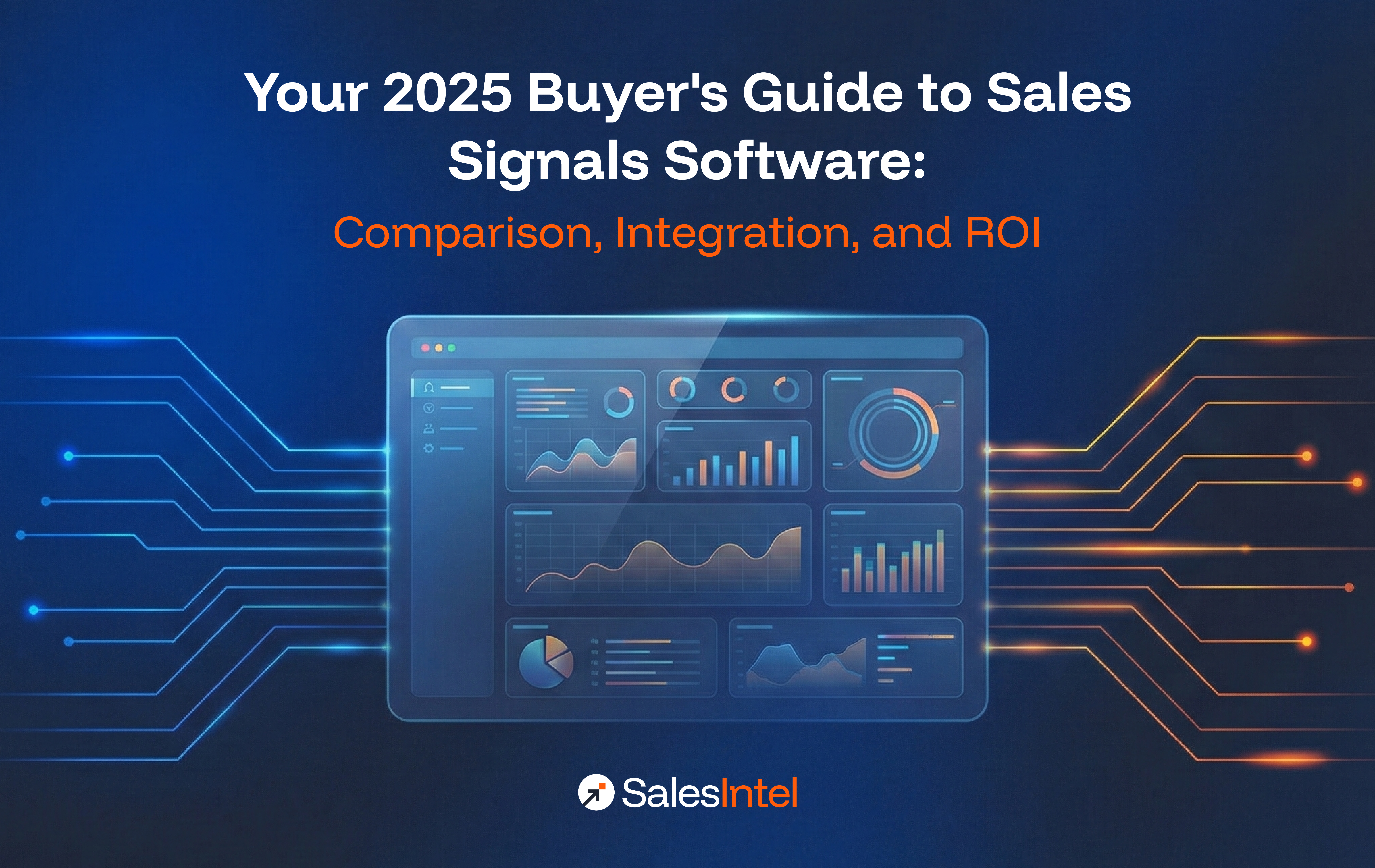Understanding your target market’s needs is key to building a successful strategy. However, marketing to businesses is fundamentally different from marketing to individual consumers. Instead of looking at personal traits such as age, gender, or income, B2B marketers focus on characteristics that define the company as a whole. This is where firmographic segmentation comes into play.
What Is Firmographic Segmentation?
Firmographic segmentation is the process of grouping B2B customers based on shared company attributes. These attributes, or firmographics, include characteristics such as industry, company size, location, revenue, and more. Similar to how demographic segmentation helps B2C marketers understand their audience, firmographic segmentation helps B2B marketers tailor their strategies to better engage businesses.
By understanding and utilizing firmographic data, companies can identify their ideal target audience, fine-tune marketing messaging, and create personalized campaigns that resonate with specific business needs. For example, a company that sells cloud software to small businesses will have a different approach than one targeting enterprise-level corporations.
Why Is Firmographic Market Segmentation Important?
Firmographic segmentation is vital in B2B marketing because it allows businesses to better understand their audience and focus their resources on the most promising opportunities. In the world of B2B, targeting is everything. It’s not enough to simply market your product to all businesses; instead, you must identify the types of companies that will benefit most from your offering.
Key Benefits of Firmographic Segmentation:
-
Tailored Marketing Campaigns
By grouping businesses based on shared characteristics, marketers can create highly personalized campaigns. For instance, companies within the same industry often face similar challenges, allowing for more relevant content.
-
Improved ROI
Since firmographic segmentation helps you zero in on businesses most likely to convert, your marketing spend becomes more efficient, leading to higher returns.
-
Resource Optimization
Rather than casting a wide net, firmographic segmentation helps companies focus their efforts on a more qualified audience, saving both time and resources.
Firmographic vs. Demographic Segmentation
While demographic segmentation is useful for B2C marketing, firmographic segmentation is essential for B2B. Demographics consider attributes like age, income, and education, while firmographics analyze characteristics at the company level. This distinction is crucial because B2B sales cycles are often longer and more complex, requiring deeper insights into the target market.
Firmographic Segmentation Variables
To implement firmographic segmentation effectively, marketers need to understand the various firmographic segmentation variables. These are the company attributes that help define your target audience in the B2B space. Here’s a breakdown of the most important ones:
-
Industry:
Segmenting by industry allows you to target companies based on the sector they operate in, such as healthcare, finance, or technology. Different industries have unique challenges, making it easier to offer tailored solutions.
-
Company Size:
Knowing whether a business is a startup or a large enterprise can shape your marketing approach. Small companies might be looking for cost-effective solutions, while larger corporations may prioritize scalability and advanced features.
-
Location:
Geographic segmentation is especially important for businesses that operate regionally or globally. You may want to focus on companies within a particular country, state, or even city, especially if local regulations or economic conditions play a role.
-
Revenue:
A company’s revenue can indicate its purchasing power. High-revenue businesses may be more inclined to invest in premium services, while smaller businesses might look for budget-friendly options.
-
Number of Employees:
Similar to company size, this variable helps you understand the scale of a business. A company with fewer employees may need simpler tools, while larger organizations require more complex solutions to accommodate multiple departments.
-
Growth Stage:
Whether a company is in the startup phase, scaling up, or fully matured affects its needs and how you approach marketing. Growth-stage companies, for example, often prioritize rapid expansion solutions.
-
Company Structure:
Differentiating between B2B and B2C companies is crucial. While a B2B company may need CRM software, a B2C business might focus on customer service tools.
Understanding these firmographic variables will allow you to create more focused marketing campaigns, ensuring that your messages resonate with the right businesses.
Firmographic Segmentation Examples
To truly grasp how firmographic segmentation works, let’s look at a few real-world examples of companies applying this technique:
-
Tech Solutions Provider:
A SaaS company targeting small-to-medium-sized businesses (SMBs) in the healthcare sector. By segmenting based on industry and company size, the SaaS provider tailors its marketing strategy to focus on offering cost-effective, scalable cloud solutions for SMBs with fewer than 500 employees.
-
Manufacturing Company:
A B2B firm selling industrial equipment may segment their market based on revenue and location. For example, targeting companies in high-revenue industries within the Midwest region of the U.S. enables them to focus their sales efforts on businesses that are both financially capable and geographically close.
-
Marketing Agency:
A B2B digital marketing agency segments its audience by growth stage. For startups and early-stage companies, they offer marketing strategies focused on brand awareness, while for established enterprises, they provide advanced digital transformation services.
Each of these examples illustrates how companies can leverage firmographic segmentation to create more targeted marketing efforts, ultimately driving better results.
Advantages and Disadvantages of Firmographic Segmentation
Advantages:
- Firmographic segmentation allows businesses to deliver personalized content that resonates with the specific challenges and needs of each segment.
- By focusing on businesses that fit your product or service, you increase your chances of conversion, as the target audience is more likely to engage with your offerings.
- \When marketing and sales teams know who their ideal customers are, they can prioritize high-value prospects and reduce time wasted on irrelevant leads.
Disadvantages:
- One challenge with firmographic segmentation is that the data used can quickly become outdated. For example, a company’s revenue or number of employees may change, which can impact its segmentation profile.
- It can be difficult to gather comprehensive data on smaller companies, startups, or businesses in niche industries. This may result in gaps in your segmentation strategy.
- Narrowing your audience too much can limit your market potential. It’s essential to find a balance between broad targeting and precise segmentation.
To address these disadvantages, companies can invest in dynamic data platforms that offer real-time firmographic updates, ensuring their data stays current.
Implementing a Firmographic Segmentation Strategy
Here’s a step-by-step guide to implementing firmographic segmentation in your B2B marketing:
-
Identify Key Variables:
Decide which firmographic variables are most relevant to your business. For example, if you’re selling enterprise-level software, company size and revenue might be the most important factors.
-
Collect Data:
Use third-party tools like SalesIntel or ZoomInfo, or gather data through LinkedIn and other professional networks. CRM systems are also invaluable for organizing firmographic data.
-
Analyze and Segment:
Group companies based on the chosen firmographic variables. For example, you may create one segment for high-revenue businesses in the tech industry and another for small, fast-growing companies in healthcare.
-
Create Targeted Campaigns:
Develop personalized marketing campaigns for each segment. This could involve creating custom email content, advertising, or even tailoring your website’s landing pages to resonate with different firmographic groups.
-
Measure and Optimize:
Track the success of your campaigns by analyzing key metrics, such as open rates, click-through rates, and conversion rates. Use this data to optimize future campaigns.
Firmographic Segmentation Template
To make it easier for you to get started, here’s a simple firmographic segmentation template:
| Firmographic Variable | Example |
| Industry | Technology, Healthcare, Finance |
| Company Size | 50-200 employees, 500+ employees |
| Revenue | <$1M, $1M-$10M, $10M+ |
| Location | North America, Europe, APAC |
| Growth Stage | Startup, Growth, Mature |
This template will help you organize your data and begin segmenting your target market based on firmographic attributes.
Firmographic Segmentation Best Practices
To get the most out of firmographic segmentation, keep these best practices in mind:
Keep Data Updated:
Regularly review and refresh your firmographic data to ensure it’s accurate. Many companies offer real-time data updates, which can improve the quality of your segmentation.
Align Marketing and Sales:
Ensure that both your marketing and sales teams are using the same firmographic criteria for lead generation and campaign execution.
Combine with Other Segmentation Types:
While firmographic data is essential, combining it with behavioral or technographic segmentation can help create even more targeted and personalized campaigns.
Use Dynamic Data Sources:
Choose tools that provide dynamic firmographic data, allowing for more precise and real-time targeting.
From Data to Strategy: Your Blueprint for Precision Marketing with Firmographic Data
As B2B marketing continues to evolve, firmographic segmentation remains a critical tool for understanding and targeting businesses. While challenges such as static data and over-segmentation exist, advancements in dynamic data and real-time analytics are helping to overcome these limitations.
By implementing firmographic segmentation alongside other advanced segmentation strategies like intent data and technographic insights, companies can create highly personalized marketing experiences that drive better engagement and conversion rates.




